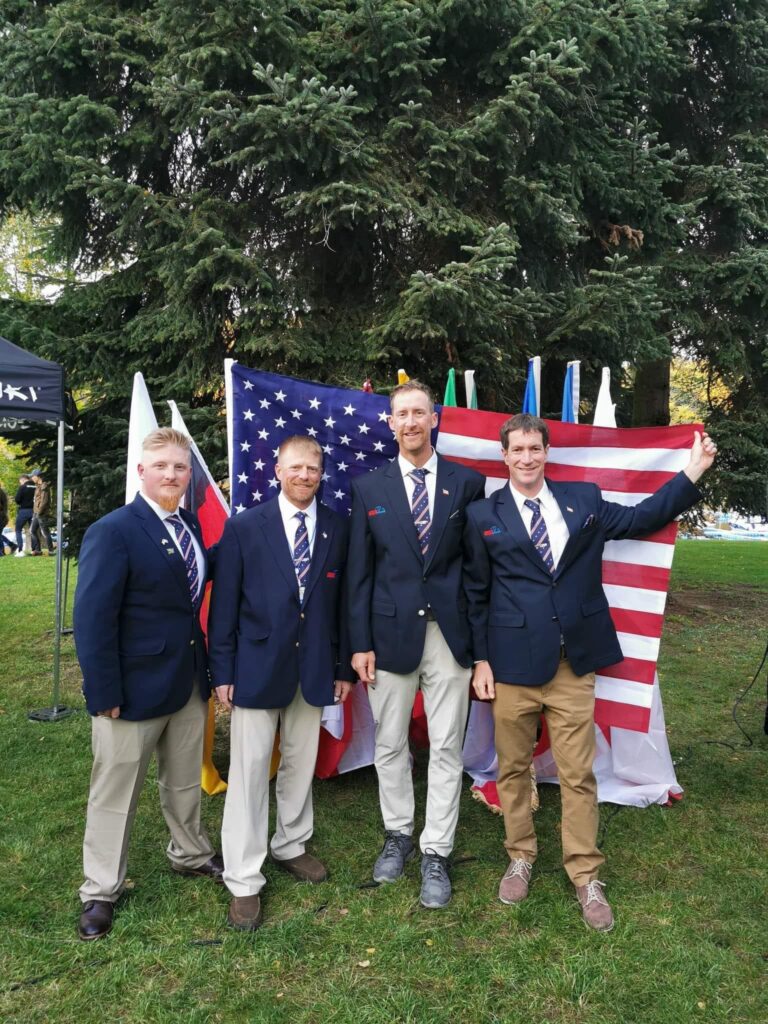
My first Carnivorous Artificial Bait Boat Angling World Championship is in the books. What an experience! I’ve received a lot of questions about it, so first let me tell you a little about the format. Each country that competes puts 2 pairs in the boats for the competition, myself and Nick Schertz were a pair, and Max Wilson and John Hoyer were the others for team USA. The biggest deal of the tournament is the combined team score for the country, but the pair ranking is also scored and awarded as well. The teams can be much deeper with coaches, managers, subs, and an extra practice boat. Some teams had up to 8 or more members! Ben Blegan and Nicole Hambrick played the roles of managers and extra practice sticks on the official practice days.
As for scoring, here’s where it gets interesting…. The idea of the Carnivorous / Predator competition is to target the top Predator species on whatever given body of water the host country chooses. Each year it’s in a different country, and in theory, it could be a totally different list of species. Typically in Europe though, it will be Pike, Perch, and Zander. Here in the Czech Republic on Slapy, they also added Asp, a predatory type of carp, however very few were caught. In the competition, every fish over the minimum score-able length counts. You catch a fish, measure it, your steward records the length in centimeters, then they square the length of the fish, that’s your points. For example, 30cm perch – 900 points, 70cm zander – 4900 points. After each day of the competition, you are ranked 1-32. 1st place is 1 “penalty”, 15th is 15 “penalties”, and so on. Then it becomes golf score, county with the least number of penalties after 3 days wins. You can also get penalties for rules infractions. Official practice is only 2 days, 7 hours on the water, and prior to that, the lake is off limits for a week to all competitors. Several of these teams, actually the majority it seemed, sent boats and teams up to a month in advance to practice before the lake is off limits. Logistically, Team USA just wasn’t able to swing that at this point. Underdogs I heard us called.

So with the format of the competition, it’s not only tricky to figure out how to find and trigger these foreign species, a big part of the game is also deciding which species you are going to target. Asp and pike our rare on this lake, so it came down to perch and Zander. We were hearing that perch were being caught, but we just weren’t catching them in the numbers or with the consistency we would need, plus the Zander were bigger and we felt as a team we were progressing each day with the Zander fishing. That’s exactly what happened for Nick and I, we progressed a little each day, 4 Zander the first day, 7 the second, and 10 on the final day. Out of 32 pairs, our places went 20th, 15th, then 7th and we finished 15th/32 overall as a pair. I’m not totally sure, but I believe Nick and I put more Zander on the card than any other pair in the competition! Nick and I fish great together, he is a machine. He gets in these zones of focus where nothing else matters but the fish, life almost stops for a moment, a day, it’s contagious, I love it. As a team, USA finished 13th/16. It turns out that some of the teams had the perch program dialed pretty good, with a few pairs putting over 50 score-able perch on the card in a day. We just couldn’t keep up. It’s tough though and an interesting dynamic, even the local Czech team targeted Zander the first day, they didn’t know how dialed these Estonian and Lithuanian teams would be on perch!

After the first day, we as a team decided that Nick and I would continue seeing how much better we could get on these Zander, while Max and John went out to see if they could unlock the perch code. Talking to some of these guys after the tournament, it sounds like most of the perch guys surgically using live sonar to cast a Carolina rig with very small plastics and popping it along bottom. Noted for next time. It wasn’t easy though, a lot of teams knew the program and couldn’t execute. Hats off to the teams that figured it out, these guys are good, real good!

As for the Zander fishing, so much fun. We were up a creek arm of the reservoir and casting Northland slurp jig heads between 1/8 and 1/2 oz in 15-25’ feet of water with a variety if plastic swim baits and working them very slowly and precisely along bottom. We used our electronics to find them pretty easily, the hardest part was figuring out the cadence. These fish may look similar, but are definitely not walleye! Slow slow slow, THUMP! Oh my gosh, what a rush when it happened. I want to go back right now.

This Team USA Predator Fishing Team is awesome, Max, Nick, John, Ben; I’ll fish with you guys anytime. Thanks to the ladies that came along to support and help us out, Julia, Nicky, and Robin! We learned a ton, and we will be back. I’m proud of what we accomplished given the circumstances. It’s an incredible challenge and I love it. Getting to fish the world and wear the red, white, and blue while representing the United States of America in the sport that I love so much is a dream come true. My new number one goal in fishing is hardware for the USA, next year the World Championship is on our home turf, let’s go!!!
